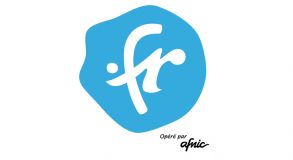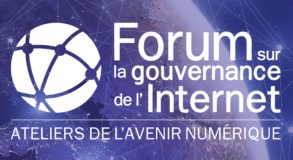Launched seven years ago by Afnic, the Cercle des .marque (The BrandTLD Club) is the French reference discussion community dedicated to brandTLDs. Today it has more than 90 members – brand owners, registrars, legal experts and communication agencies.
This annual assembly once again brought the community together for exclusive content and in-depth discussions on the developments in the sector, compounding the event’s status as a forward-looking forum for exchanging ideas and views. Studies, feedback, possible uses and ICANN updates were all on the agenda for this 7th edition.
On 15 October 2025, the Cercle des .marque assembly brought together more than fifty participants in Paris, including Afnic employees, businesses holding or applying for their own brandTLD, partners and experts.
On the agenda:
- Figures and trends: market developments and concrete use cases.
- Security and trust: how a brandTLD protects an organisation’s digital identity.
- ICANN applications: timeline, rules, cost and latest news on the next round of brandTLD registrations.
- SEO and AI: the future of SEO in the age of nTLDs.
- ROI and performance: can a brandTLD be a cost-effective investment?
Figures and trends: market developments and concrete use cases
Loïc Damilaville, Survey and Market Intelligence Manager at Afnic, set out the broad trends in new TLDs (nTLDs), with a special focus on brandTLDs.
In 2012, these domains already represented 44% of nTLD registrations despite the programme still being in its youth and little publicised. And this dynamic has gained rapid momentum since 2023: there are now over 32,000 brandTLD domain names, with growth spikes correlating to the emergence of new uses. In 2025, 42% of brandTLDs had between 6 and 500 names, a clear sign that these domains are taking root in corporate digital strategies.
To illustrate these trends, Marion Carrier, Product Marketing Manager at Afnic, presented the Top 5 brandTLD creations worldwide in 2024-2025:
- DVAG / Allfinanz – Over 3,200 new domain names, providing each consultant with a personalised space: a model of proximity and trust.
- Groupe Schwarz (Lidl, Kaufland) – A unified ecosystem under .schwarz, guaranteeing security, coherence and sovereignty all the way through to its cloud services.
- Google – A twofold strategy: .google for the public, .goog internally to reconcile visibility and technical control.
- Toyota – With .toyota, the brand is strengthening its global identity and simplifying access to its services, from innovation to local business.
- Amazon – A streamlined architecture thanks to .amazon, .aws and .prime, creating a smoother and more secure user experience.
In France, E.Leclerc has illustrated this dynamic by making its .leclerc not only consistent and controlled, but a digital territory in its own right. Other players like MMA, Audi and Lidl are also using their TLDs to reinforce their networks or combat online fraud.
One important point emerged from the discussions: the success of a brandTLD is not measured in number of registrations alone. With a TLD of this type, reserved for the exclusive use of its holder, a few names can be all that is needed if they are used to further a clear, value-added strategy. What matters the most is use, coherence, security and innovation over quantity.
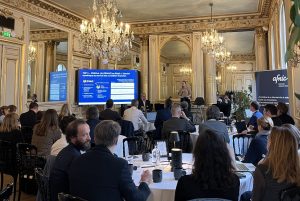
Security and trust: how can a brandTLD protect your identity online?
During their presentation, founding partner of SolidNames, Anthony Don, and Afnic Director of Information Systems and Chief Technical Officer, Régis Massé, underscored the importance for brands of taking back control over their digital identity thanks to a brandTLD and turning it into a major lever for security, sovereignty and trust online.
Unlike a .com or .fr domain, where the brand is merely a tenant, a brandTLD offers total control of the DNS, registration rules and governance. Which means zero cybersquatting, zero imitation and a sovereign identity.
Information Systems Departments or Cybersecurity Departments thus gain a crucial advantage: the brandTLD means that high-level security standards can be enforced (DNSSEC, SPF, DKIM, DMARC, HTTPS) against spoofing, email attacks and DNS hijacking. What is optional in other situations becomes a benchmark in resilience.
Anthony Don and Régis Massé also demonstrated how a brandTLD can counter phishing attempts: thanks to DMARC, the business can reject, quarantine or analyse phishing emails, preventing fake messages from being sent in the brand’s name given that email is the primary attack vector.
Anthony Don gave Amazon and its .aws as a prime example: Amazon uses its TLD to unify, secure and control its ecosystem via short addresses (e.g. calculator.aws) and a sovereign DNS which is impossible to imitate.
During the discussions our experts proved that a brandTLD is not just a tool to build a corporate image, it is a digital shield, a sovereign territory free from pollution and where the brand controls everything, from naming to certificates and from emails to the DNS. In a context of growing threats, the 2026 application window represents a strategic opportunity to lastingly protect your brand online.
brandTLD applications: latest news from ICANN, timeline, cost and rules
Afnic’s Legal Director, Marianne Georgelin, and CSC Regional Director of France, Patrick Hauss, shared all the need-to-know information for the next round of applications. The rules have now been clearly laid down in the Applicant Guide Book which sets out the timeline, the technical requirements and the validation criteria.
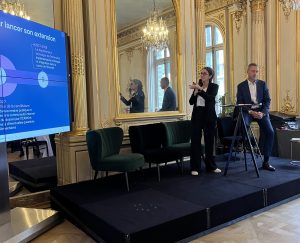
Applications will be open for 3 to 4 months from 27 April 2026, and will be followed by a Reveal Day in mid-October at the latest. Each brand can apply for up to four variant string gTLDs and, in the event of contention, can replace the original string at no extra fee, thus safeguarding their strategy. Application validations will last until 2027, ready for the first deployments between 2027 and 2028.
As Marianne Georgelin explained, a brandTLD allows businesses to exercise complete control over their digital space, cut the risks of spoofing significantly and guarantee consistent communication within a group. The cost of applying for a brandTLD is $227,500, plus the mandatory TMCH fee. Added to this are the operating fees for the TLD, upwards of €50,000 per year depending on the services taken out with providers.
Patrick Hauss emphasised one point in particular: a brandTLD is a company-wide undertaking, it is not solely a legal or technical matter. The success of the project lies in in-house support as it locks the company in for 10 years and affects numerous teams (Management, IS, legal, cybersecurity, marketing). He reminded the participants that arguments need to be adapted accordingly: some will see it as a security matter, others as a marketing lever, and others again as a strategic asset or ROI. The application window only opens once a decade, so it is important to instil a sense of urgency within the company.
His reference image — “.com means being a tenant; a dotBrand means being the owner” — summed up the critical stake: regaining control over your own digital territory. Now is the time to get the company’s in-house teams on the same page and start preparing the application.
SEO and AI: the future of SEO in the age of nTLDs
Led by Mickaël Vigreux, the round table “SEO and AI: the future of SEO in the age of nTLDs” included Arnaud Franquinet, CEO of Gandi, and Quentin Fily, SEO Expert at hyffen. They recalled the three pillars of SEO: technique, content and popularity, rounded off by the key notion of trust, formulated in the E-A-T (Expertise, Authoritativeness, Trustworthiness) criteria.
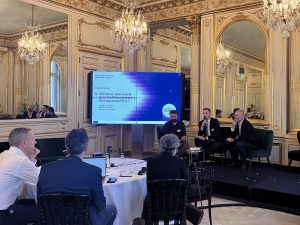
From this point of view, brandTLDs are a logical and coherent evolution of SEO. A brandTLD guarantees a controlled and authentic space, without negative legacy and better protected against cybersquatting. It strengthens a company’s digital identity and sends a clear signal to search engines: the brand controls its environment, its content and its domain. For users it means: “I am the official website”, which fits with Google’s logic of trustworthiness.
The speakers also stressed that although backlinks remain important, the AI boom is placing increasing emphasis on citation and semantic coherence. AI engines focus on sense, and tomorrow’s major challenge will be positioning yourself as the right answer, particularly with increasing vocal uses and direct responses.
They recalled that AI depends on the content available on the web, which means that editorial production is still vital. In a context where brand queries are set to intensify and where the notion of trustworthiness has become a decisive factor, a brandTLD offers a demonstrable advantage: it secures the ecosystem, simplifies readability for search engines and places the brand in the best SEO conditions both today and within the AI universe taking shape.
ROI and performance: can a brandTLD be cost-effective?
The closing round table, led by Émilie Turbat, Marketing and Commercial Director at Afnic, saw Bertrand Realini, Domain Name Manager at BNP Paribas, and Arnaud Wittersheim, Brand Name Strategist at Nameshield, talk strategy: “ROI and performance: can a brandTLD be cost-effective?”
A consistent theme emerged right from the outset of the discussions: a brandTLD cannot be seen as merely a technical device. It is a strategic digital asset, giving the company total control over its naming space. By removing the intermediaries traditionally involved in the management of domain names, a brandTLD allows for direct governance, meaning lower costs, operational simplification, and significantly tightened security against the risks of compromise and spoofing.
The feedback from BNP Paribas and its .bnpparibas TLD has demonstrated the scope of this model. Despite the massive increase in the number of distributed TLDs available worldwide, the bank has noted stable exposure to cybersquatting as a direct consequence of the deterrent effect its customers’ trust in .bnpparibas has on cyberscammers. The example of BNP Paribas Real Estate, revamped and relaunched under the brandTLD following a major incident in 2017, has also proven the value of the dotBrand when it comes to resilience and business continuity.
On the economic front, Arnaud Wittersheim reminded participants that the entry cost ($227,500 for ICANN fees) may seem demanding, but it needs to be assessed in terms of the direct and lasting returns generated: reduced risk of fraud and disputes, a streamlined portfolio, simplified digital governance and access to exclusive data making it possible to pre-empt uses and better protect the brand.
The speakers also emphasised the marketing and business benefits: greater readability, greater consistency within the digital ecosystem, user trust and new network possibilities, such as models involving partners and franchisees, all while retaining total control.
The common conclusion is that brandTLDs are emerging as a strategic long-term investment that enhances a brand’s security, performance and promotion. Their cost-effectiveness depends above all on a structured use strategy that can transform the initial investment into a lasting competitive edge.
This 7th edition of the Cercle des .marque has demonstrated that brandTLDs have a role to play in building the digital world of the future, one that is more sovereign, more secure and that generates greater trust. As the next round of applications in April 2026 approaches, brands will once again have the opportunity to create and control their own digital territory.
Many thanks to the speakers for their insightful contributions and to all of the participants for these constructive discussions. It is a great source of pride to see this community evolve every year, galvanised by collective intelligence at its best: cross-pollinating ideas, sharing practices and broadening our perspectives together.
And the discussions continue year round through a quarterly newsletter in which we bring you the latest news, trends and testimonials about custom TLDs. Write to us at cercle-marque@afnic.fr to become a member and receive your copy.
The community will also be continuing its work throughout the year in the form of workshops, webinars and resources provided by Afnic to support brands in seizing this unique opportunity.

